#Dee Mitchell
Explore tagged Tumblr posts
Photo










Sheryl Lee Ralph & Brandy: MOESHA - S01E01 ("Pilot")
#moesha#moesha mitchell#brandy norwood#dee mitchell#sheryl lee ralph#gifalentan#I JUST LOVE DEE.............. SO MUCH.........................
59 notes
·
View notes
Text



MOESHA 4X09: "A Class Act Christmas"
#moesha#tvedit#90sedit#black sitcoms#moesha mitchell#frank mitchell#miles mitchell#dee mitchell#90s nostalgia#mineedits#pocpopculture#blacksitcomedit#christmasedit#blackontelevision#black tumblr#blackactorsdaily#moeshaedit
2 notes
·
View notes
Text
That accent is giving me flashbacks low-key 🤭
12 notes
·
View notes
Text
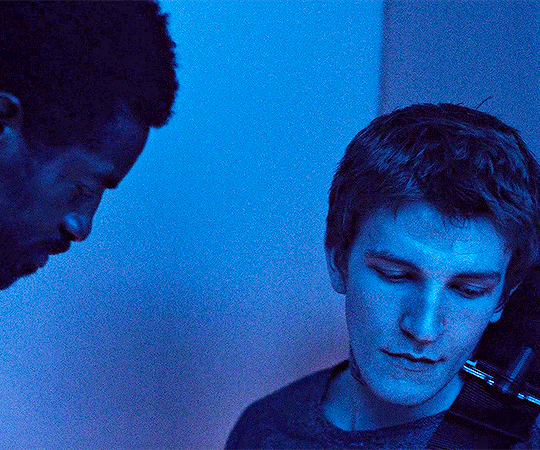




EWAN MITCHELL as Ettore in High Life (2018)
#ewan mitchell#ettore#ettore high life#high life#ewan mitchell edit#ewanmitchelledit#call eiffel 65 because this film is blue da ba dee af#hoosbandewangifs#filmedit#moviegifs#a24#a24 films#a24 movies#a24edit
155 notes
·
View notes
Text

im right
#house of the dragon#its always sunny in philadelphia#aegon ii targaryen#aemond targaryen#dee reynolds#dennis reynolds#tom glynn carney#ewan mitchell#kaitlin olson#glenn howerton
36 notes
·
View notes
Text

[Id. Gintama x Taskmaster alcohol marker drawing. A tired Ginpachi sensei saying "I'd lost the will to live. Yeah." End Id.]
#They're dragging you around#like a substitute teacher#gintama#gintama fanart#my art#sakata gintoki#ginpachi sensei#gintama x taskmaster#was dying to get THAT tie in colour#i mean can he look more like a teacher?#which reminds me#this morning I caught a Jack Dee Unbelieveble Truth episode and he told David Mitchell something like and I lost it bad in my health care w#anyway Ginpachdee is mood forever
7 notes
·
View notes
Text
My mate just said i have to get my obession with comedians in check.
Hahahahahahahahahahahhahahahahahahahahahahahahahahhahahahhahahahahahahahahahahqhahahahahahahahahahahahahahahahahahaahahahahahahahahahaha
No.
#britcom#james acaster#ed gamble#comedian#british comedians#comedians#rhys james#suzi ruffell#joe lycett#dee allum#liza tarbuck#lee mack#david mitchell#adam hills#josh widdicombe#alex brooker#greg davies#alex horne#six idiots#richard ayoade#nish kumar#noel fielding#it crowd#bbc ghosts
102 notes
·
View notes
Text
#British comedy#British comedians#richard ayoade#James acaster#noel fielding#David Mitchell#Stewart lee#diane Morgan#sara pascoe#bob mortimer#frankie boyle#limmy#I also love aisling Bea (but she’s Irish) . lee Mack. Dave Gorman. daisy may cooper. jo brand.#Greg Davies. josh widdicombe. jack Dee and so many others !!#it’s so hard to choose my favourites 😭#im just interested in who everyone’s fave is tbh. I’m such a big fan of British comedy. it’s one of my special interests!#not to be biased but British comedians >>>>#the only thing that makes me proud to be British#txt
8 notes
·
View notes
Text

Wayne Shorter Dies at 89
- “It’s time to go get a new body and come back to continue the mission,” jazz great reportedly says
Wayne Shorter, the saxophonist and band leader who most famously played with Miles Davis and Weather Report, has died at 89.
No cause was given in a Facebook post that said Shorter died at 4 a.m. local time March 2.
“Wayne Shorter peacefully continued on his immense journey into the unknown,” the post said. “He was surrounded by loving family. In his words, ‘It’s time to go get a new body and come back to continue the mission.’”
Shorter got his start in the late 1950s in Art Blakey’s Jazz Messengers. The following decade was spent as a key member of the band now known as Miles Davis’ Second Great Quintet. The saxophonist would later co-found Weather Report and record more than 20 albums under his own name.
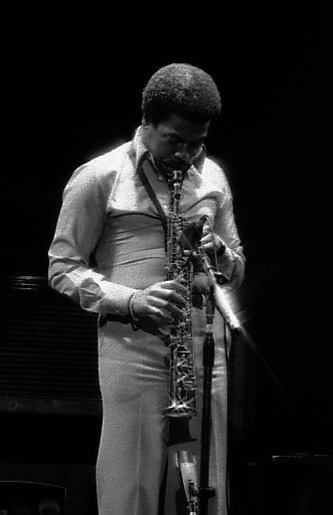
“Goodbye to a giant,” Spyro Gyra said on social media.
Charles Lloyd was a student at USC when he met the man he called “the maestro.” Thus began a lifetime of professional collaboration and personal friendship.
“Wayne elevated the art form of sound as only he could,” Lloyd wrote on social media. “I loved him straight through - he was a deep spirit on a human journey and he blessed the planet, all of the solar systems and beyond.”
Al Di Meola recalled touring with Weather Report in 1978 and said he spent the time after every show talking with Shorter backstage.
“(I) could never tell if Wayne was talking some deep shit or some spaced-out genius stuff,” the guitarist said. “Anyway, he spoke often like he played - in short bursts. One of the God-like giants leaves us. Thanks for the legacy, Wayne.”
Vocalist Dee Dee Bridgewater called Shorter “one of the greats,” whose kindness and generosity matched his talent. The jazz world, she said, feels the loss.
“We are in mourning,” Bridgewater said.
As a session player, Shorter would cross over into rock with a jazz bent, playing on recordings by Steely Dan, Joni Mitchell and others.
“He took the horn to places other saxophonists weren’t even imagining it could go,” Vernon Reid said. “Wayne liberated it from the shadows of Bird (Charlie Parker) and Trane (John Coltrane).”
3/2/23
#wayne shorter#miles davis#weather report#art blakey#art blakey’s jazz messengers#spryo gyra#charles lloyd#al di meola#dee dee bridgewater#steely dan#joni mitchell#vernon reid#living colour#charlie parker#john coltrane
80 notes
·
View notes
Text
Now watching:
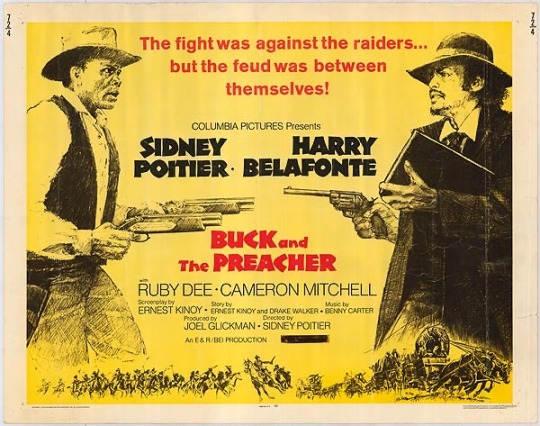
5 notes
·
View notes
Text
Character Profile: Dee
Full Name: Deirdre Una Mitchell Kingdom: Avis Generation: 2

*Art by the awesome @harchibudytgorichi
Dee is taken from her clan on the western coast after the rulers of Avis learn about her. While not born with natural magic, she was born with an affinity for it. She is able to cast magic and find other magical beings due to her affinity, which the Andersons find to be advantageous for the Avis kingdom. She is ordered to marry Cam, becoming a Mitchell. The goal of her marriage is to pass on her affinity along with the Mitchell’s magical ability to create a stronger generation of warriors for the Avis kingdom. She has a tough time being brought into the folds of the Mitchell clan due to her clan having been a peaceful one. She takes in upon herself to immerse her skills into the study of the rare Avis magic rather than the physical brute force the Mitchell are known for.
#broken mirrors#27th#June#2023#June 27th 2023#Dee#Deirdre Una Mitchell#Mitchell#avis#Avis Kingdom#original character#character profile#harchibudytgorichi
7 notes
·
View notes
Text
'Love is timeless and dependable. It's a safe place where I can breathe.' 🧭 - Jo Dee Messina
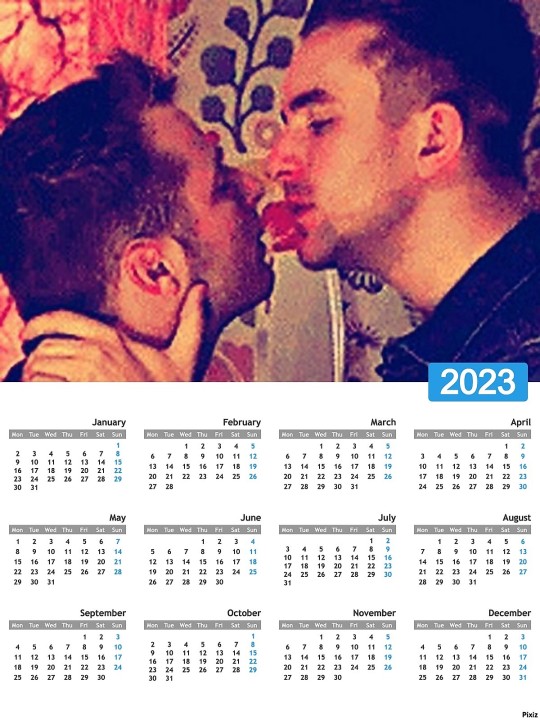
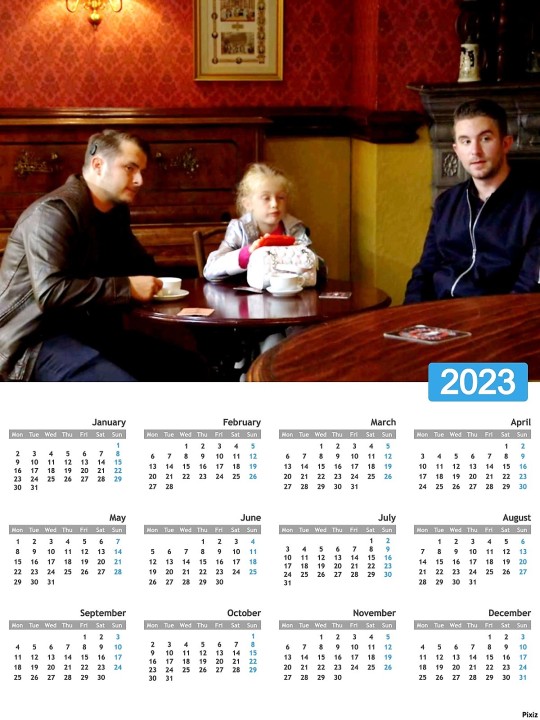




Ben's safe place is called Callum...💞
6 notes
·
View notes
Text
Mudbound (2017)
My ★★★★★ review of Mudbound - #MovieReview #FilmReview
Mudbound (2017) Plot – Two men return home from World War II to work on a farm in rural Mississippi, where they struggle to deal with racism and adjust to life after war – Mudbound. Director – Dee Rees Starring – Jason Mitchell, Jason Clarke, Carey Mulligan, Garrett Hedlund Genre – Drama | War | Historical Released – 2017 ⭐⭐⭐⭐⭐ Rating: 5 out of 5. If you liked – Da 5 Bloods, Detroit,…
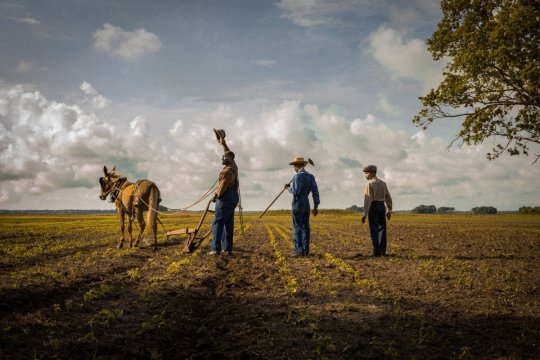
View On WordPress
#2010s Cinema#★★★★★#Black Cinema#Carey Mulligan#Dee Rees#Directed by Women#Drama#film review#Film Reviews#Garrett Hedlund#Historical#Jason Clarke#Jason Mitchell#movie review#netflix#War
4 notes
·
View notes
Text
REBELLION RISING ON THE RISE: 2009-2018
THE FRANCE AND IRISH LINK TO THE REBELLION:
THE PARANORMAL HOTSPOT IN ROUSE HILL REGIONAL PARK
THE REAL CENTER OF THE CIVIL WAR OF THE REBELLION OF VINEGAR HILL PART 1:
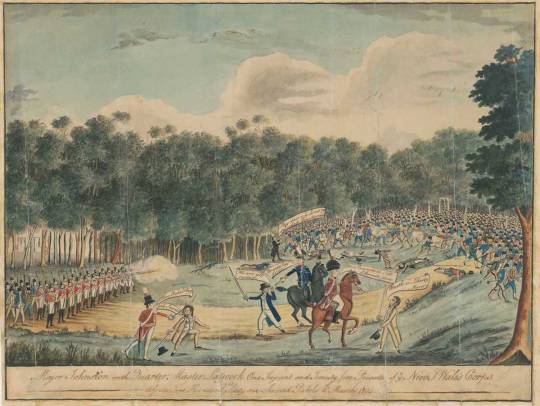
My hypothesis is there is a link to the slave revolts in Haiti and the Battle of Vinegar ill where the Irish slaves attempted to overthrow their English captors.
This is founded by my initiation into haitian voodoo, 21 divisions creole spiritism which combines with my cereominal magician tradition starting HARDCORE at the same site (the battle site of vinegar hill) back in 2009.
All events were extreme paranormal and unexplained anomalous events, experienced by a friend and I who were yet to be formally initiated into ceremonial magick or vodou.
A magical portal was opened which took me until 2018 to close
many ufo and other supernatural events took place at this site
which can be ascribed to the closest site to the only civil war in Australia has ever witnessed.

My notes on the historical context from 2022
1789
After 1789, some Volunteer units showed their sympathy with the French Revolution by holding parades on 14 July to commemorate the fall of the Bastille. In 1792, Grattan succeeded in carrying an Act conferring the franchise on the Roman Catholics; in 1794, he introduced a reform bill that was even less democratic than Flood’s bill of 1783.
He was as anxious as Flood had been to retain the legislative power in the hands of men of property, for he had a strong conviction that while Ireland could best be governed by Irish hands, democracy in Ireland would inevitably turn to plunder and anarchy. The defeat of Grattan’s mild proposals helped to promote more extreme opinions. However, as soon as the Jacobin regime assumed power in France, radical Patriots became more reluctant to refer to France as a prime example of Catholic political action for the causes of liberty and justice. Nevertheless, one of the main inconsistencies on the Patriot political agenda by calling for increasing powers of the Irish parliament while maintaining the selective as opposed to universal suffrage seemed to have been dissolved.
However, the French Revolution also had a second, contrasting, effect. Conservative loyalists such as John Foster, John Fitzgibbon and John Beresford, however, remained opposed to further concessions to Catholics and, led by the ‘Junta’, argued that the ‘Protestant Interest’ could only be secured by maintaining the connection with Britain. In reactionary circles, it was used to emphasise the point that an open political debate without censorship as well as parliamentary reform could entail a severe blow to their special interests, and could be tantamount to inviting Radicals to overturn the political structure of the country, rather than just appeasing them. In particular, the French Revolution prompted relentless action against the radical wing of the Patriot movement, the United Irishmen that included many former Whigs. It also prevented more moderate Patriots from supporting some radical Patriot activities without reservation, depriving the Patriot movement of solidarity and unity.
1688-91
WILLIAMITE WAR
William of Orange - dutch born
William of Orange, the Dutch prince who became King of England, Scotland, and Ireland in the Glorious Revolution of 1688
Defeated catholic "james 2nd" in wiliamite-jacobite war.
Protestant ascendancy
THE DECLATORY ACT OF 1719
Loss of Independence due to the House of British Lords being able to pass laws in Ireland
Restrictions of commerce at the expense of ireland that favoured Britain were tipping this rise to the protestant ascendancy for GREATER freedoms from great britain.
ORANGE ORDER:
The basis of the modern Orange Order is the promotion and propagation of "biblical Protestantism" and the principles of the Reformation. As such the Order only accepts those who confess a belief in a Protestant religion.
As well as Catholics, non-creedal and non-Trinitarian Christians are also banned.
This includes members of The Church of Jesus Christ of Latter-day Saints(Mormons), Jehovah's Witnesses, Unitarians, and some branches of Quakers.
Previous rules specifically forbade Roman Catholics and their close relatives from joining
but the current rules use the wording "non-reformed faith" instead. Converts to Protestantism can join by appealing to Grand Lodge.
James Wilson and James Sloan, who issued the warrants for the first Lodges of the Orange Order along with 'Diamond' Dan Winter, were Freemasons,[26] and in the 19th century many Irish Republicans regarded the Orange Order as a front groupestablished by Unionist Masons as a more violent and jingoist vehicle for the promotion of Unionism.[71] Some anti-Masonic evangelical Christian groups have claimed that the Orange Order is still influenced by freemasonry.[72] Many Masonic traditions survive, such as the organisation of the Order into lodges. The Order has a similar system of degrees through which new members advance. These degrees are interactive plays with references to the Bible. There is particular concern over the ritualism of higher degrees such as the Royal Arch Purple and the Royal Black Institutions
1795: the battle of richmond hill
Darug natives defend the land from british invaders
North richmond - pitt town wetlands.
1798
The first battle of vinegar hill
County wicklow
The catholics invasion and claim to the irish land and protestant ascendancy
Act of union 1800- rise to catholic invasion that allowed the mobilisation of the catholic poplation
Uniteed the british parliament and irish parliement in unity, to form a united front
Catholic resentment in leinster
1789
THE AFRO-CARIBBEAN LINK
UNITED IRISH PRISONER
JAMAICA
WEST INDIES
NEW FOUNDLAND
NEW SOUTH WALES
"United Irish" mutinies in Jamaica, Newfoundland and New South Wales
In October 1799 Castlereagh received reports from Jamaica that many (of the 3,200)
United Irish prisoners, "incautiously drafted" into regiments for service in the West Indies, had taken to the hills to fight alongside the Maroons and with the French: "as soon as they got arms into their hands they deserted".
There is no suggestion that this was part of any trans-Atlantic design of the United directory in Dublin or Paris.
The same is true of the "United Irish Uprising in Newfoundland" in April 1800. Two-thirds of the colony's main settlement, St. John's, were Irish, as were most of the island's locally-recruited British garrison. There were reports that upwards of 400 men had taken a United Irish oath, and that eighty were resolved to kill their officers and seize their Protestant governors at Sunday service. As in Jamaica, the mutiny (for which 8 were hanged) may have been less a United Irish plot, than an act of desperation in the face of brutal living conditions and officer tyranny.
Yet the Newfoundland Irish would have been aware of the agitation in the homeland for civil equality and political rights.
There were reports of communication with United men in Ireland from before '98 rebellion;of Thomas Paine's pamphlets circulating in St John's;and, despite the war with France, of hundreds of young Waterford men still making a seasonal migration to the island fisheries, among them defeated rebels who are said to have "added fuel to the fire" of local grievance.
In March 1804, stirred by news of Emmet's rising, several hundred United Irish convicts in New South Wales tried to seize control of the penal colony and to capture ships for a return to Ireland.[204] Poorly armed, and with their leader Philip Cunningham seized under a flag of truce,the main body of insurgents were routed in an encounter loyalists celebrated as the Second Battle of Vinegar Hill.
The 1803 Michael Dwyer, who was a captain of the irish rebellion of 1798, transported to NEW SOUTH WALES
-1807 x 2 imprisoned and x2 trials for plotting against the british penal rule in NSW
1804
The second battle of vinegar hill
LIBERTY OR DEATH!
‘Death or Liberty’
The 1804 Castle Hill convict rebellion was led by Philip Cunningham of Moyvane, north County Kerry, a government stonemason who was convicted for his involvement in the 1798 Irish rebellion; he was also involved in a mutiny on board the convict transport ship, the Anne.
He was key figure in the planning of the rebellion, along with his rebel assistants William Johnston and Samuel Humes.[
Accompanied by over 200 frustrated armed Irish convicts, their aim was to capture ships and sail to Ireland. The rebels gathered at Castle Hill, calling on other convicts to join them.
Their intention was to march from Windsor to Parramatta, and then onto Sydney, gathering recruits along the way to attain a ship to bring them back to Ireland.
The Irish rebels were betrayed by an informer Keogh, who told the authorities of the Irish convicts’ plans.
By 1804, most of the Irish leaders of the previous attempts at rebellion had been imprisoned and moved to outlying areas of the colony such as Norfolk Island. Dispersal had worked well for the authorities but with each new rebellion plan, new Irish leaders rose among the convicts more aware of what not to do next time. The leaders of rebellion on 4 March 1804 were Phillip Cunningham and William Johnston.
Cunningham was a veteran of the 1798 conflict in Ireland and the mutiny of the convict transport ship Anne. From his experiences in Ireland and NSW he understood that secrecy and a non-traceable but effective communication were essential to a successful rebellion.
Cunningham’s emphasis on secrecy was so successful that it was not until the day before the rebellion that the authorities knew of its existence.
On the evening of 3 March, one of the Irish convict overseers turned informant. On Sunday 4 March, the day of the rebellion, two more informants came forward and provided names.
John Griffen was one of the informants and had been relaying a message to the pike-maker Bryan Furey that the rebellion was on for Sunday night.
Since Furey did not get the message the areas of Sydney, Parramatta and Windsor did not rebel.
Castle Hill was the only district that rose in rebellion.
Despite this intelligence, the authorities in Parramatta and Sydney did not act immediately and on 4 March 1804, John Cavenah set fire to his hut in Castle Hill at 8.00 pm. This was the signal for the rebellion to begin.
With Cunningham leading, 200 rebels broke into the Government Farm’s buildings, taking firearms, ammunition and other weapons. Initially, there was mayhem as buildings were ransacked to cries of ‘Death or Liberty’. Two English convicts dragged the Hills District flogger, Robert Duggan from under his bed and George Harrington an English convict beat him unconscious. A constable was saved from a musket ball in the face when the musket of John Brannon misfired.
Another constable was saved in similar circumstances when Jonathon Place’s musket also misfired. Cunningham gathered the rebels and reprimanded them for their lack of disciplined behaviour.
The rebels then went from farm to farm on their way to Constitution Hill at Parramatta gathering firearms, supplies and drinking any liquor they found. The looting of farms gave the rebels over 180 swords, muskets and pistols. In 1804, this was close to one third of the colony’s entire armoury
I do therefore proclaim the Districts of Parramatta, Castle Hill, Toongabbie, Prospect, Seven and Baulkham Hills, Hawkesbury and Nepean to be in a STATE of REBELLION; and to establish Martial Law throughout those Districts…
Cunningham’s plan involved burning the MacArthur property of ‘Elizabeth Farm’ in order to draw the Parramatta garrison out of the town.
Once this was done the rebels in Parramatta would rise up and set fire to the town as a signal. The Castle Hill rebels would gather at Constitution Hill and then raid the barracks for more arms and ammunition.
From there the rebels would march to Windsor and join up with the rebels in the Hawkesbury before marching on Sydney. At dawn on 5 March, rebels were still straggling in to Constitution Hill. Phillip Cunningham and William Johnston were busy drilling the rebels on the hill while they were waiting for the signal from the uprising rebels in Parramatta. The signal never came. Cunningham’s messages to the Parramatta and Windsor rebels had not got through. Cunningham decided that the rebels would head down the Hawkesbury Road to Windsor to meet up with the rebels from the Hawkesbury. Had Cunningham effected this, King maintained it would have increased his force by a further hundred rebels.[10]
Colonial paranoia increased once evidence of planned rebellion became evident after 1800 but how real was the threat from Irish convicts?
The Defenders and United Irishmen transported between 1795 and 1806 provided leadership to those convicts, many Irish but including English transportees, who were prepared to take direct action to overthrow the colonial authorities.
Although it was the Irish convicts who were a particular concern to Hunter, King and Bligh, it is important not to over-exaggerate their significance while under-estimating the involvement of convicts of other nationalities. In addition, the Irish convict leadership had considerable experience in planning and implementing rebellious activities.
This explains why successive governors sent leaders or presumed leaders, whether there was concrete evidence of sedition or not, to the more isolated penal settlements on Norfolk Island and VDL. This had the effect of disrupting any planning for insurrection.
Finally, hatred of the British in Ireland was transposed to NSW and this meant that Irish leaders had a willing supply of convicts who were prepared to support their actions.
That support came from non-Irish convicts is a reflection of the punitive and arbitrary nature of convict life. Where they were concentrated in one area, as on the Castle Hill farm, Ireland’s cause helped bind these men together.
However, there were major problems for those seeking rebellion. First, keeping planning secret was a major difficulty and only the Castle Hill revolt in 1804 saw planning converted into action.
Convicts were always willing to ‘split upon each other’ and this allowed the authorities to intervene before matters spiralled out of control.
Secondly, the objectives of rebellion such as the rallying cry of ‘Death or Liberty’ or demands for a ship to go home were idealistic and unrealistic. Although these may have been the aims of rebel leaders, there is little evidence that they were widely held by the rank-and-file, many of whom claimed that they had been forced into rebellion
Thirdly, as in Ireland during the 1798 rebellion, when faced with even inferior military force, the rebels could not translate numerical strength into military victory.
Finally, the hoped for French aid was illusory as it was never part of French strategy and, during the critical period from 1801 to 1804 war in Europe had been suspended.
It was the British government that was constantly afraid of convict rebellion and disorder though this did not stop it from sending political prisoners to NSW despite the concerns of successive governors. For the authorities, a colony composed largely of convicts was inevitably turbulent and rebellious, something reflected in Hunter’s and King’s despatches. In his reports on NSW and VDL, Bigge considered that the best security against rebellion was the higher standard of living that convicts generally enjoyed in NSW than in Britain and the opportunities and rewards open to those with industry and skill. Some convicts ‘bolted’ but only a few rebelled.
Rouse Hill Estate
Vinegar Hill was not a formal location in 1804.
The battle between the rebels and the soldiers became commonly known as the ‘Battle of Vinegar Hill’ after the Irish battle in 1798. Common usage of the name Vinegar Hill began to appear in the 1810s and 1830s in the Rouse Hill area.
But there is no formal Vinegar Hill on a map. There have been competing thoughts for the location of Vinegar Hill.
Originally it was thought to be Rouse Hill, George Mackanass challenged this in the 1950s marking the location of Vinegar Hill as the crossroads between Windsor Road and Schofields Road.
THIS WAS THE LOCATION OF ROUSE HILL REGIONAL PARK, in which my friend and I partook in rituals with an optical crystal ball resulting in FULL BLOWN MANIFESTATIONS.
-1816
Richard rouse
Built tollhouses, turnpikes, estates from Parramatta to Liverpool
On 8 October 1816 Rouse was granted 180 hectares (450 acres) near the site of the Castle Hill convict rebellion; at the suggestion of Macquarie the grant was named Rouse Hill. The actual possession of the land had taken place a few years previously, as the Sydney Gazette had first mentioned Rouse Hill on 27 November 1813, and the homestead was begun soon afterwards. It took a few years to build and was a two-storey, twenty-two room house, which has been occupied by members of the Rouse family ever since.
Old government house & THOMAS MITCHELL ROYAL PEDIGREE ANCESTRAL ASSET
& THE HIDDEN HAND OF PARRAMATTA GOVERNMENT HOUSE AND THE TIMEKEEPERS SOUTHERN HEMISPHERE
this is an actual freemasonic ancestral connection of mine... this links to the rebellion and the colonisation of the country.
The Observatory, erected in 1822 was part of Brisbane's intention to make Parramatta "the Greenwich of the Southern Hemisphere" (DPWS 1997: p. 39).
1828, when Thomas Mitchell began the first trigonometrical survey of New South Wales, his initial meridian was taken from the Parramatta transit instrument in consultation with Dunlop. That survey underpinned mapping in New South Wales until recent times (Rosen 2003: p. 80).
Surveyor Edward Ebbsworth, when conducting his 1887 survey of Parramatta Park, ensured that the exact location of the piers would be preserved by fixing a copper plug in the basal stone of the piers.
Brisbane was accompanied to Australia by two astronomers: Charles Rumker, who had already attained a good reputation as an astronomer and mathematician; and James Dunlop, whose great natural ability in mechanical appliances and instruments saw him identified as a suitable man for second assistant in the Observatory in an out of the way place like Parramatta. On arrival in New South Wales, Brisbane's instruments were immediately set up on piers in the Domain to allow the observation of the solstice on 21 December 1821. B
April 1822, the construction of the observatory had been completed in anticipation of the appearance of Encke's Comet, an event not observable in Europe or at the Cape of Good Hope (Rosen 2003: p. 80).
The observatory was privately funded by Brisbane and consisted of two buildings: an observatory equipped at Brisbane's personal expense; and a residence attached to it. Located about 91 m (100 yards) behind Government House, the observatory was a plain building, 8.5 m (28 feet) square by 3.4 m (11 feet) high, with a flat roof with two domes 3.51 m (11 feet 6 inches) in diameter projecting from it, one at the north and the other at the south.
On the north and south sides were five windows, three of which were in a semi-circular projection from the wall at the base of the domes.
Transit openings in the domes extended to one of the windows to allow observations of the horizon. A 0.41-metre (16 in) Reichenbach repeating circle was located under the north dome and a 1.2-metre (46 in) equatorial Banks telescope was under the south dome.
There was also a Troughton mural circle and a 1.7-metre (5+1⁄2 ft) Troughton transit instrument. A Hardy clock showed sidereal time and a Brequet clock showed mean time.
All instruments were mounted on solid masonry piers.
There was also a Fortin pendulum and two instruments for observing the dip and variation of the magnetic needle.
CONVICT LIES
O’Farrell estimates about 1.5% of these were unambiguously sent out as political offenders or participants in rebellion or conspiracy, with the great bulk of these coming in the aftermath of the 1798 Rebellion.
If crimes of agrarian discontent and social disaffection are included under the heading of ‘political crimes’, then the proportion of Irish political transportees rises to about 20%. The great majority of Irish convicts were, therefore, sent to Australia largely for petty crimes.
Theory to link back to
JOHN DEE AND THE OPTICS OF THE CRYSTAL BALL USED BY THE MONARCHY OF BRITISH CROWN
BASED ON THE PROJECTION INTO THE ASTROLOGICAL, ASTRONOMICAL TRANSITS TO CONQUER VIA USING EDWARD KELLY AS "COURT MAGE" AND THE ENOCHIAN CHESS IN THE GLOBAL CONQUEST
real scrying methods take two or more people in the spiritual court for impact, as per 2009 - 2014 when K and I had adopted the original crystal ball between us resulting in full-blown manifestations, later confirmed by Kardec spiritism sources
my spirits advise me Australia is the prime spot for HAITI 2.0 FOR THE SECOND COMING OF THE SLAVE REVOLT IF THINGS CONTINUE THIS WAY ....
note the date and time and motions of movement
note the present economic, social and political happenstance
note the pestilence that has persistence against the masses who only want freedom and peace
note the objections from the overlords through clauses like agenda 2030, and sustainable development, which are just fancy names for the "new world order". which is just a modern 'human slave agenda" decked out in bureaucratic red tape.
freedom of choice, or be denied all liberty?
look at the manipulation that occurred as a result of COVID-19 and the forced COVID-19 vaccine agenda
when will the next thing that replicates occur, and when will humanity rise against the overlords to object in the most amicable and peaceful or diplomatic way, as clearly, the violence and bloodshed aren't going to work here.
PEACEFUL REBELLION.
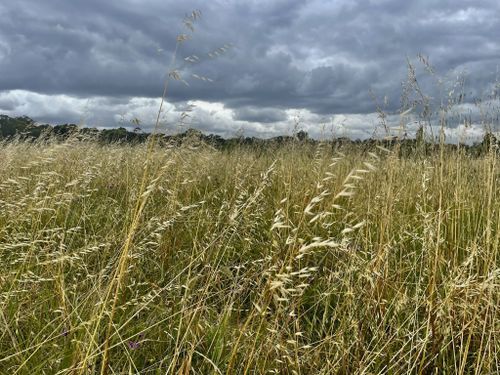

#john dee#crystal ball#vinegar hill#1804#rebellion#the battle of vinegar hill#australian history#haunted australia#paranormal australia#parramatta#john dee and edward kelley#thomas mitchell#rouse hill regional park#supernatural australia#haunted places in australia#ley lines#the rum rebellion#haitian revolt#slave rebellion#irish rebellion#liberty or death#calling down the lwa.#rum rebellion#crystal balls#scrying#spiritism#haitian vodou#ogun#spirts#revolt
1 note
·
View note
Text
#Mudbound#2017#Dee Rees#Virgil Williams#Carey Mulligan#Garrett Hedlund#Jason Mitchell#Jason Clarke#Mary J. Blige#movies#film#movie review#film review#movie critic#movie#film critic#film criticism#movie criticism
1 note
·
View note
Text
re: timeless
"sometimes there's no proof, you just know"
In honour of Timeless being one of my top songs this year, here is her playlist! This one is maybe my most heart-emoji-pink-sunset-holding-hands-and-blushing-in-love playlist, capturing the true essence of my hopeful romantic soul! I hope you enjoy!
About my playlists🌷✨
I love curating my music, and making playlists based around the vibe of a song, or a certain feeling. I have a lot of my own personal playlists, and after some friends started asking me to make them some, I thought I'd open up requests to my tumblr pals! Feel free to save to your own library, or copy over into your own playlist on another site.
To request a playlist, send me an ask with the song or vibe in question, as well as any particular genre preferences etc.
This is one of my personal playlists, and so I will continue to add songs to it as I come across them! I do not add to requested playlists.
#dee's playlists#bloom by the paper kites was my brother and his wife's wedding song that she walked down the isle to <3333333 makes me sob#jenny mitchell is one of my fave nz artists!! i absolutely love her!! lovely lovely country/folk vibes and exquisite songwriting#taylor swift#timeless#speak now taylor's version#speak now tv
1 note
·
View note